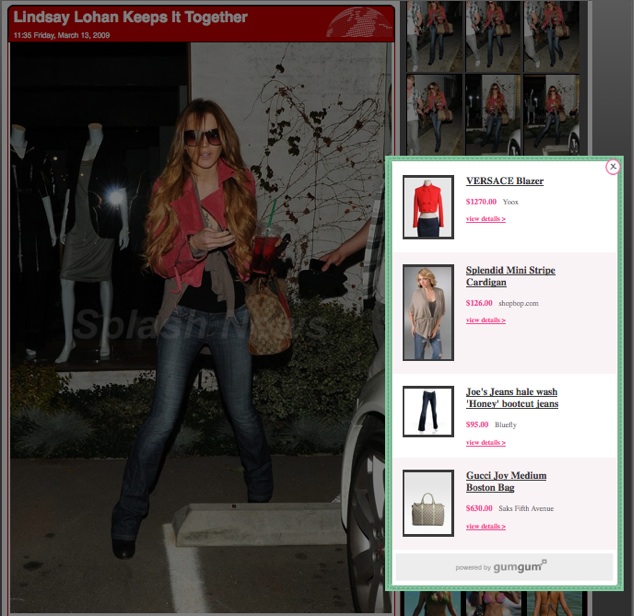Image licensing startup GumGum
is introducing a new ad unit to go along with all of those celebrity
pics that it helps to distribute. Next time you come across a paparazzi
shot of Lindsay Lohan
on the Web, you might see a ShopThisLook badge next to the image
courtesy of GumGum. Click on the badge and window will pop up with
shopping links for clothes and accessories similar to what Lohan is
wearing in the picture. When possible, GumGum tries to match the exact
same pair of jeans, dress , or shirt.
, or shirt.
GumGum tracks images that reach 25 million people a month across the
Web. It has data on which images are spread around and viewed the most.
Using a combination of image recognition technology and human editors,
it adds tags to the most popular celebrity photos. These tags then
trigger cost-per-click (CPC) links with images from Shopzilla and Shopstyle
and Shopstyle .
.
There is a lot of human editing that goes into this process. Image
recognition techniques are simply not good enough yet to completely
automate the process. But all GumGum has to do is tag the most widely
distributed images of the most popular celebrities to see if the
concept has legs.
Websites that license images through GumGum can either pay for them
or use them free with advertising. The ShopThisLook badges will appear
in place of the ads for certain images. Website publishers who pay for
the images can also opt in to show the badges, in which case they will
receive 30 percent of any CPC revenues.
GumGum CEO Ophir Tanz says that in early testing, the badges are
clicked on about one percent of the time, but that the click-through
rate to an actual item after that is 29 percent. That implies a blended
click-through rate of 0.29 percent, and the effective CPM is 90 cents.
These numbers are based on a limited sample, and before any effort to
optimize them.
(Read our previous coverage of GumGum here and here).

Article Link
 , recently launched a tagging software, Tags
, recently launched a tagging software, Tags ,
,

